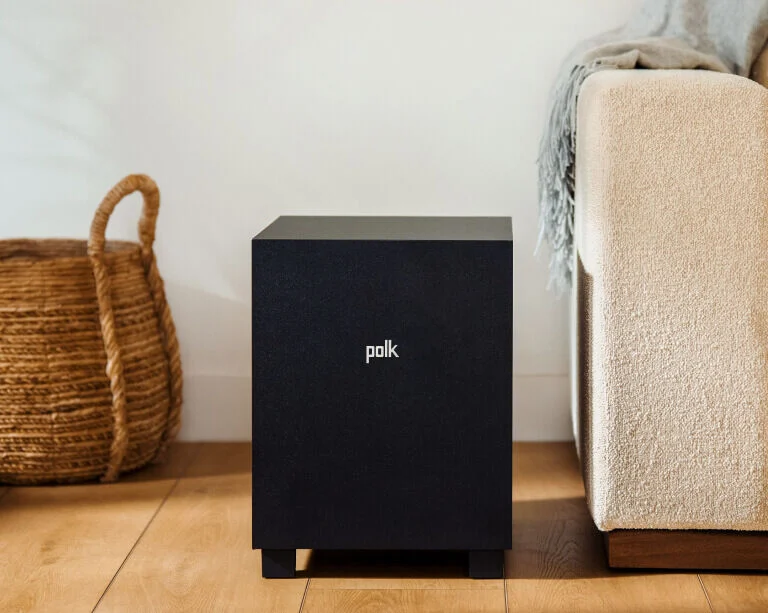How to Stream Music at the Highest Quality
Article written by Sarah Jones
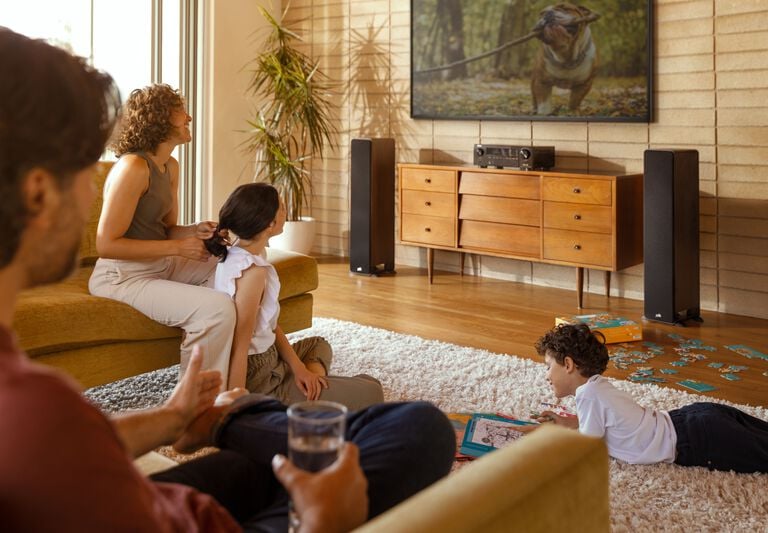
Polk Signature Elite ES50 floor-standing speakers pair well with a Denon AVR-X1700 receiver.
Music fans and hi-fi lovers share a common quest to experience their favorite songs in their purest form, with sound quality as close as possible to the original recordings.
High-resolution digital sound unveils the nuances that bring music to life: the rush of a singer’s breath, the squeak of a guitarist’s finger sliding up the strings, the lush echoes in a reverberant space.
Capturing all of that detail generates an extraordinary amount of data, so for decades, streaming services have compressed audio files, removing as much as 80 percent of the information in the original recordings in the process. For music lovers, enjoying the convenience of streaming meant compromising on audio quality for the sake of bandwidth.
With today’s technology high-resolution streaming is now possible. And, with tens of millions of songs at their fingertips, even the staunchest audiophiles have come around to streaming services. Here, we share tips to elevate your music streaming experience.
What Is High-Resolution Music, Anyway?
“High-resolution” refers to audio files that are encoded with a higher sampling rate and bit depth than standard CD-quality audio, providing a more detailed and accurate representation of the original source sound. High-resolution audio is typically “lossless.” “Lossy” audio compression, in comparison, reduces the size of audio files by permanently throwing out some content data, resulting in a smaller file but a degradation in sonic quality.
High-resolution audio has a sampling rate up to 192 kHz and bit depth up to 32 Hz; for comparison, CD audio is 16-bit/44.1 kHz resolution. Any format below CD quality, such as MP3, AAC, WMA, and other highly-compressed audio formats, is considered low-res. (If you’re interested in taking a deeper dive into high-resolution digital audio and what it means to be Hi-Res Audio Certified, check out our post on Hi-Res Audio Certified speakers.)
Streaming Services and High-Resolution Music
Platforms like TIDAL, Qobuz, Amazon Music HD, Deezer, and Apple Music offer massive libraries of high-resolution music, with many titles available in multiple resolutions. (Spotify has been promising a high-resolution “Spotify HiFi” subscription tier for two years now; our fingers are crossed that we’ll see something by the end of 2024.)
TIDAL, for example, offers three tiers of subscription: Standard (lossy), HiFi (CD quality), and Master (high resolution). Qobuz also offers three tiers: Basic (lossy), Premium (CD quality), and Sublime (high resolution). Amazon Music HD offers a range of resolutions, including CD-quality and high-resolution, and Apple Music and Deezer each offer a few tier selections based on the number of users. (I’m partial to TIDAL, which provides the biggest artist payouts, and Apple Music, which hosts the largest music catalog.)
Note that high-resolution music streaming consumes much more data and processing power than standard streaming. For perspective, the TIDAL Master plan streams music at up to 9,216 kbps, which can eat up more than 18 GB per hour. In some cases, you may need to update your internet speed to ensure smooth playback.
What Do I Need to Stream High-Resolution Music?
You don’t need much gear to stream high-res music, but for the best streaming experience, it’s important to make sure that everything in the chain, from your music source to your listening setup, is top quality. (If you’re listening on the free earbuds that came with your phone or your favorite Bluetooth party speaker, you won’t experience high-res audio in all of its clarity and detail.) This starts with finding the right service for you and finding your comfort zone when it comes to investing in hardware.
Playing digital audio files requires converting the digital signal to analog for listening. Most devices, including phones, computers, and TVs, have built-in digital-to-analog converters; however, not all of them support high-resolution audio, and on-device DACs can be subject to electronic noise interference. For the best experience, consider a standalone DAC or a quality AVR with good built-in converters. For the highest-quality audio, stick to wired speakers and headphones; Bluetooth technology doesn’t meet high-resolution specifications because of bandwidth limitations.
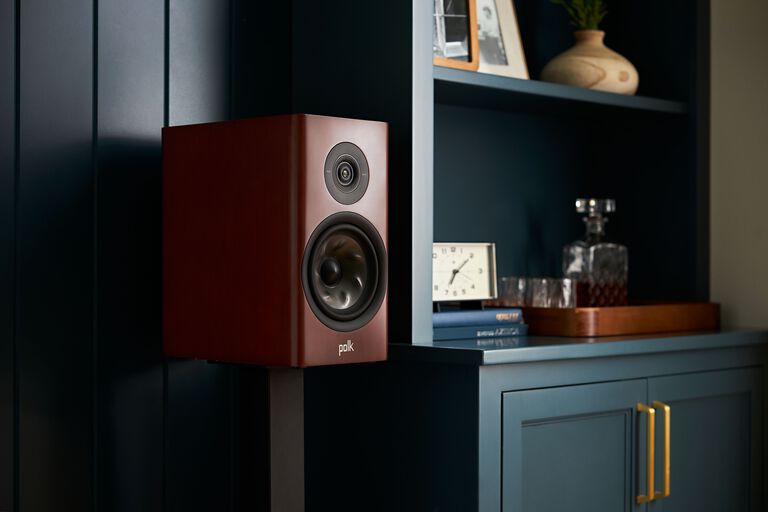
The Polk Reserve R200 Anniversary Edition, featuring the Pinnacle Ring Radiator tweeter and Turbine Cone Woofer.
Why Polk Loudspeakers?
Polk’s Hi-Res Audio Certified loudspeakers, such as the Legend L200 bookshelf and the Reserve R700 floor-standing speaker, are engineered to expose every nuance of high-resolution sound so you’ll experience music exactly as the artist created it. Look for our signature acoustic technologies that deliver a highly accurate and immersive listening experience:
• Our Pinnacle Ring Radiator tweeter features a pointed waveguide that reproduces sound images with pinpoint accuracy, for incredible realism, while dispersing highs evenly throughout the room, for the same authentic sound in every seat.
• Our Turbine Cone Woofer perfectly balances lightness and rigidity to provide a breathtaking level of midrange detail—even at high volumes.
• Our Column Resonance Control technology neutralizes resonances that naturally occur in large speaker cabinets, revealing a more open, accurate sound with smoother, cleaner bass and midrange.
• Polk's exclusive SDA, or Stereo Dimensional Array Technology, available in our flagship Legend L800 floor-standing loudspeaker and select sound bars, creates an ultra-wide soundstage with hyper-realistic imaging.
By upgrading to high-resolution audio, you’ll unlock the full potential of your favorite songs and indulge in the rich details that will transport you directly to the heart of the performance. And by choosing Polk Audio loudspeakers, you’ll hear every note, beat, and instrument with clarity and precision, exactly as its creators intended.
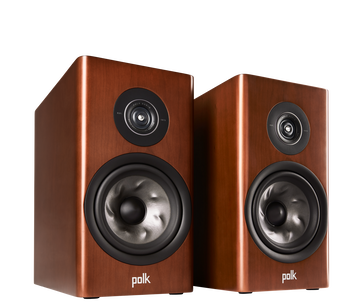
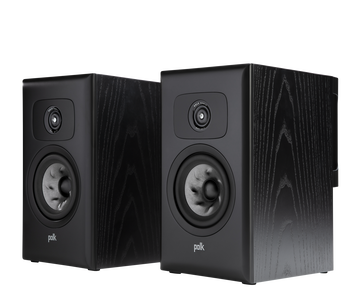

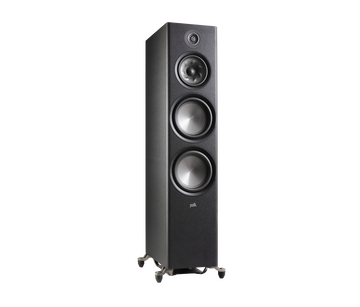
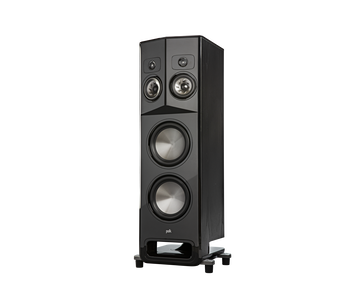
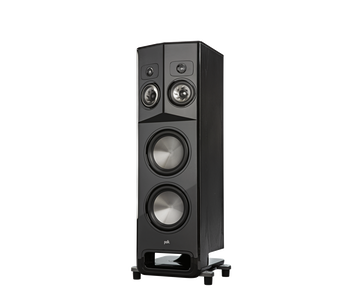
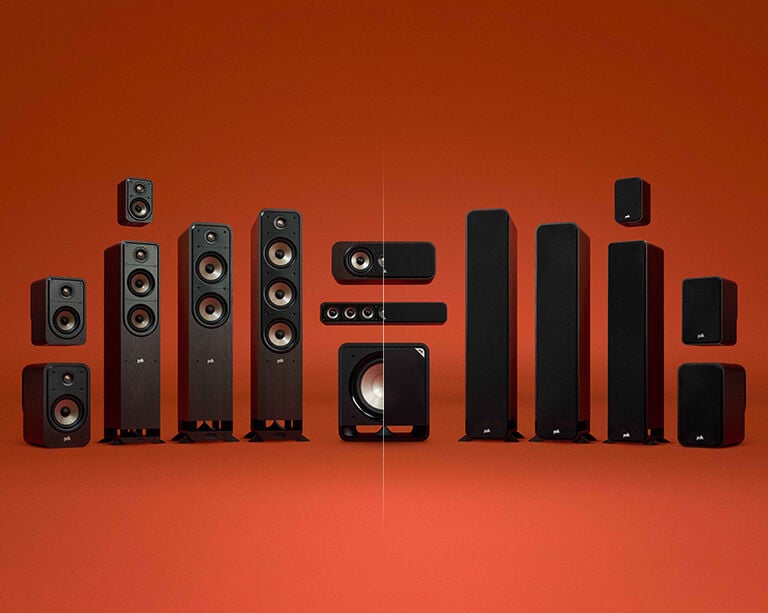
.jpg?sw=768)
